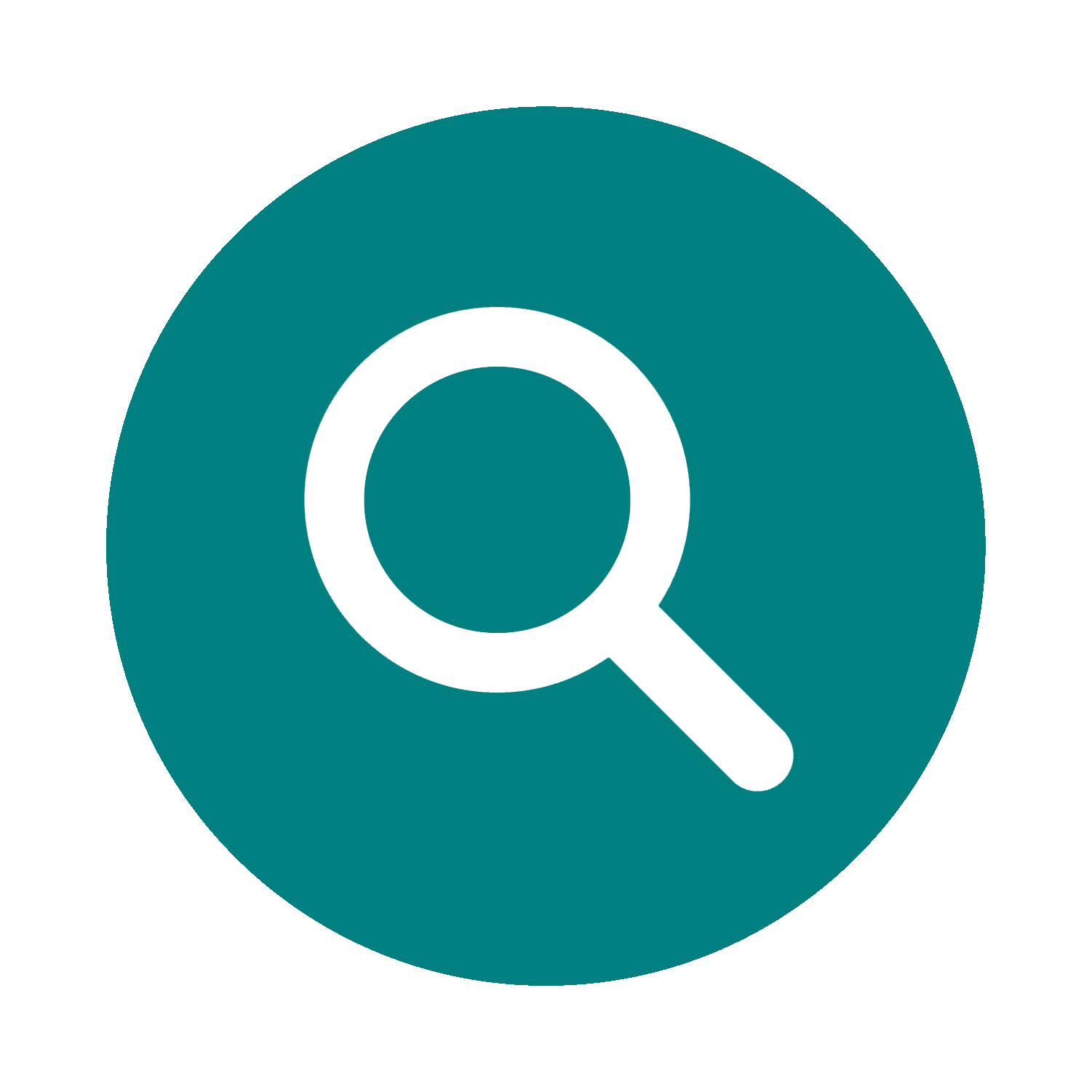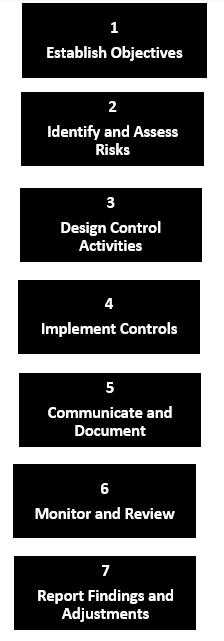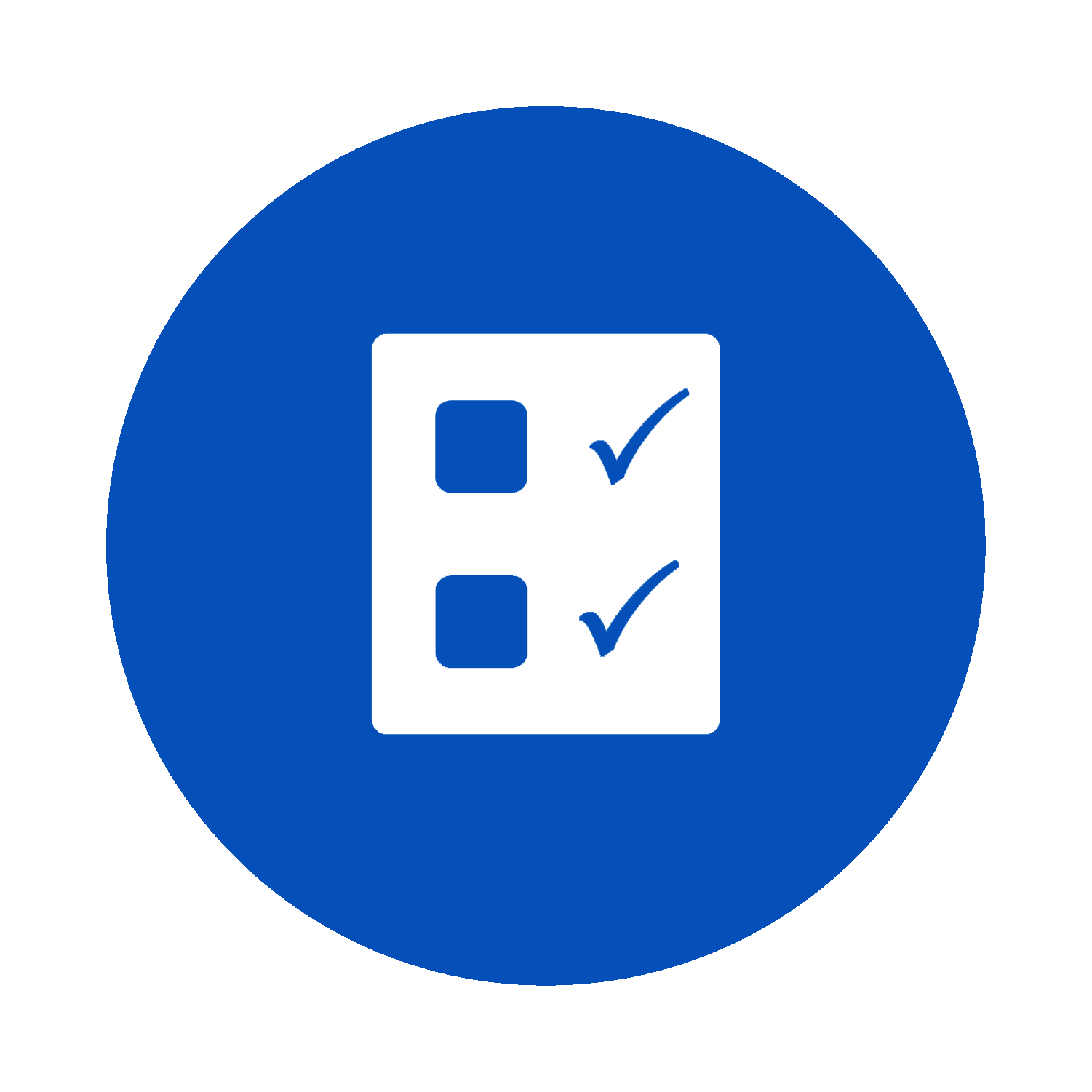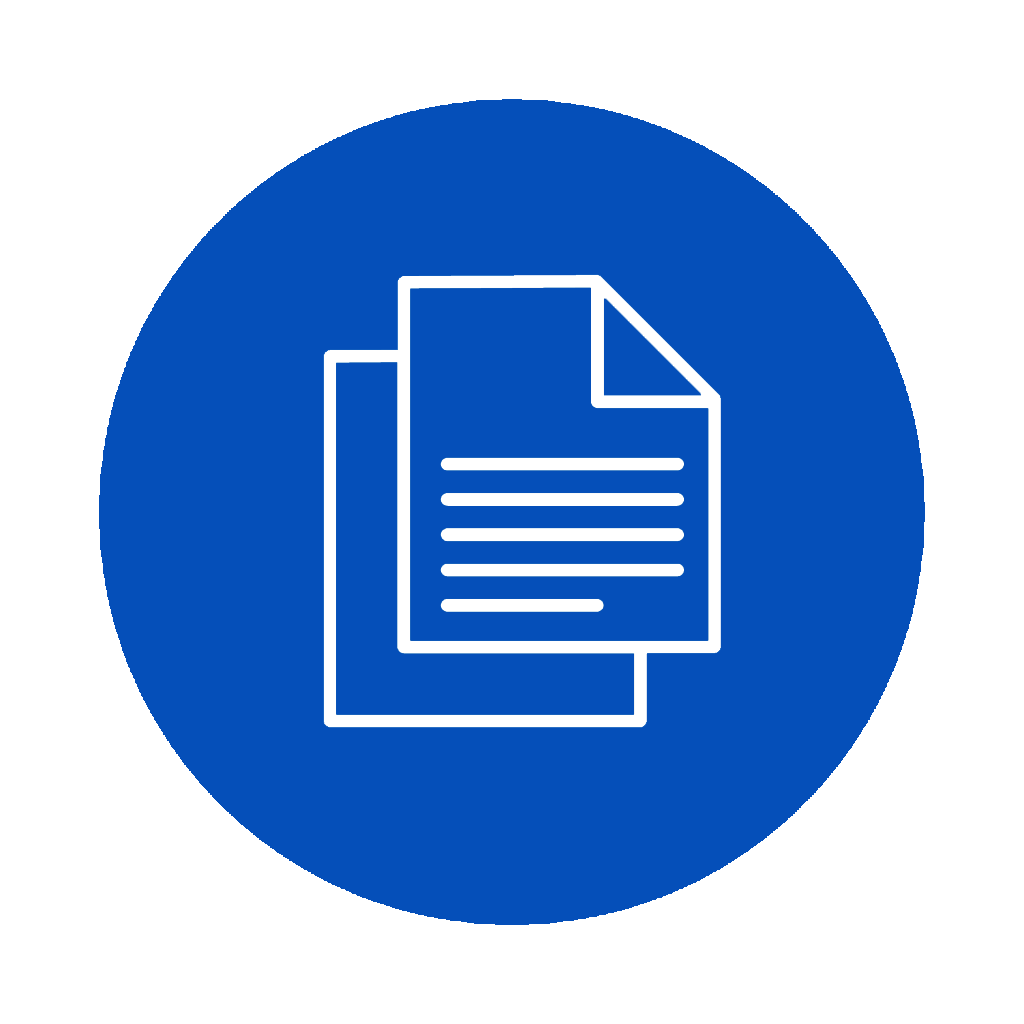Chapter 05. Internal Controls
05.03. Designing and Implementing Control Systems

Key Questions
![]() Briefly reflect on the following before we begin:
Briefly reflect on the following before we begin:
- What steps are involved in developing an internal control system tailored to an organization’s needs?
- How do risk assessments inform the design and implementation of control systems?
- What role does technology play in enhancing the effectiveness of control systems?
- How can stakeholder engagement influence the design and success of control systems?
In modern organizations, designing and implementing effective control systems is essential for mitigating risks, ensuring compliance, and safeguarding assets. This section delves into the intricacies of developing robust control systems to address various organizational objectives and risk factors.
Developing an internal control system involves several key steps, including identifying and assessing risks that could impact the organization’s objectives. By understanding the specific risks faced, organizations can tailor control measures to mitigate these risks effectively. Policies and procedures provide daily guidelines and standards for employees and are crucial in control implementation. Additionally, leveraging technology can enhance control systems by automating processes, strengthening security measures, and providing real-time monitoring capabilities. Engaging stakeholders throughout the control design and implementation process is vital for ensuring buy-in and alignment with organizational objectives. Documenting controls meticulously is essential for clarity and compliance purposes, enabling organizations to demonstrate adherence to regulatory requirements and industry standards. Despite the benefits, organizations often encounter challenges in implementing control systems, such as resource constraints, resistance to change, and complexity in aligning controls with evolving business processes. Addressing these challenges requires careful planning, communication, and ongoing evaluation of control effectiveness. By navigating these considerations, organizations can establish robust control systems that contribute to their overall success and resilience.
 Internal Audit in Action
Internal Audit in Action
Background
Health Pharmaceuticals Inc., a pharmaceutical company, faces stringent regulatory requirements across its global operations. Recent expansions and the introduction of new products have underscored the need for a comprehensive internal control system to ensure compliance with these regulatory demands.
Challenge
The primary challenge for Health Pharmaceuticals is to design and implement an internal control system that not only meets current regulatory requirements but is also adaptable to future changes in legislation. The system must ensure compliance across all stages of product development, manufacturing, and distribution while maintaining operational efficiency.
Action Taken
To address this challenge, Health Pharmaceuticals’ compliance and internal audit teams take the following measures:
- Risk Assessment: Conduct a thorough risk assessment focusing on areas of regulatory compliance, identifying potential gaps and areas of vulnerability.
- Control Design: Develop a set of controls tailored to mitigate identified compliance risks, including preventive and detective controls. This involves creating clear policies and procedures, establishing training programs, and monitoring mechanisms.
- Technology Integration: Leverage technology to automate and strengthen the control system. This includes using compliance management software to track regulatory changes and ensure that all relevant departments are informed and prepared to adapt.
- Stakeholder Engagement: Engage with key stakeholders, including department heads and external partners, to ensure that the control system is integrated into daily operations and that responsibilities are communicated.
- Implementation and Documentation: Roll out the control system across the organization, accompanied by comprehensive documentation and training for all employees. Ensure that the implementation is phased and monitored for issues.
Outcome
Health Pharmaceuticals’ dedicated effort in designing and implementing a targeted internal control system significantly improves its regulatory compliance posture. Automated alerts and updates on regulatory changes keep the company ahead of compliance issues. The clear documentation and ongoing training programs ensure that employees know their roles in maintaining compliance. As a result, Health Pharmaceuticals experiences fewer regulatory issues, enhancing its reputation and operational stability.
Reflection
This scenario underscores the importance of a well-designed and implemented internal control system in managing complex regulatory requirements. Health Pharmaceuticals’ approach highlights the role of comprehensive risk assessment, stakeholder engagement, and technology in developing an effective control system supporting compliance and operational goals.
Steps in the Development of an Internal Control System
Developing an internal control system is a structured process that involves several critical steps to ensure that the system effectively addresses an organization’s unique risks and operational needs. The steps in developing an internal control system include:
- Establish Objectives: The first step involves defining the objectives of the internal control system. Objectives should be clear, measurable, and aligned with the organization’s strategic goals. They typically include ensuring the accuracy of financial reporting, compliance with laws and regulations, efficiency of operations, and safeguarding assets.
- Identify and Assess Risks: Once the objectives are established, the next step is identifying the risks that could prevent the organization from achieving these objectives. This involves conducting a thorough risk assessment to identify potential threats to the organization’s operations, financial reporting, and compliance. Each identified risk is then assessed regarding its likelihood and potential impact.
- Design Control Activities: Based on the risk assessment, control activities are designed to mitigate identified risks. These controls can be preventive, detective, or corrective in nature. The design of control activities should consider the cost-benefit relationship and aim to address risks effectively and efficiently.
- Implement Controls: After designing control activities, the next step is their implementation. This involves integrating controls into the organization’s processes and systems, training relevant personnel, and ensuring all levels understand and accept controls.
- Communicate and Document: Effective communication and documentation are essential to an internal control system. Policies and procedures related to internal controls should be documented and communicated to all relevant stakeholders. Documentation provides a reference for understanding and assessing the control environment and procedures.
- Monitor and Review: To ensure effectiveness, the internal control system should be subject to ongoing monitoring and periodic reviews. This includes regular evaluations of control activities, assessment of the system’s performance against objectives, and making necessary adjustments to controls as the organization’s environment and risks change.
- Report Findings and Adjustments: The results of monitoring and review activities should be reported to management and other stakeholders. Based on these findings, adjustments to the internal control system may be necessary to address any deficiencies or changes in the organization’s risk profile.
Exhibit 5.1 shows the steps in the development of an internal control system.

Developing an internal control system is a dynamic process that requires continuous attention and adaptation. By following these steps, organizations can establish a robust internal control system that supports achieving objectives, enhances the reliability of financial reporting, ensures compliance with laws and regulations, and improves overall operational efficiency.
Let’s explore some aspects of these steps in a bit more depth.
Assessing Risk to Inform Control Design
Assessing risk is a crucial step in the design of an internal control system. It involves identifying and analyzing potential events that could affect the organization, understanding the likelihood and impact of these events, and using this information to inform the design of adequate controls. This risk assessment process is fundamental to ensuring that the control system is efficient and effective, focusing resources on areas of highest risk.
The first step is to identify potential risks that are preventing the organization from achieving its objectives. This includes external and internal risks, ranging from financial, operational, legal, and compliance to strategic and reputational risks. SWOT analysis (Strengths, Weaknesses, Opportunities, Threats) and PESTLE analysis (Political, Economic, Social, Technological, Legal, Environmental) can be employed to identify risks comprehensively. Once risks are identified, the next step is to assess the likelihood of each risk occurring and its potential impact on the organization. This assessment helps prioritize risks, focusing on those that pose the greatest threat to achieving organizational objectives. Risks can be categorized as high, medium, or low based on their likelihood and impact, aiding in allocating resources to mitigate them effectively.
An organization’s risk appetite and tolerance levels influence the ways by which risks are managed and controls are implemented. Risk appetite refers to the amount and type of risk an organization is willing to accept to pursue its objectives. In contrast, risk tolerance defines the acceptable variation in outcomes related to specific risks. Understanding these thresholds helps design controls aligning with the organization’s strategic goals and risk management philosophy. Based on the risk assessment, specific control activities can be identified to mitigate identified risks. This involves determining whether existing controls are adequate and identifying areas where new controls are needed. Control activities can include preventive, detective, and corrective controls tailored to address specific risks.
Considering the cost-benefit analysis of implementing each control is essential. Controls should be designed to mitigate risks efficiently without imposing undue burden or cost on the organization. This analysis ensures that the benefits of risk reduction outweigh the costs of implementing and maintaining the control activities. Risk assessment is not a one-time activity but a continuous process. The organization’s environment and risks can change, requiring ongoing monitoring and review. This ensures the control system remains relevant and effective in addressing new and evolving risks. By systematically assessing risks to inform control design, organizations can ensure that their internal control systems are focused on the most significant threats, aligned with the organization’s risk appetite and tolerance, and optimized for efficiency and effectiveness. This approach not only supports the achievement of organizational objectives but also enhances resilience and adaptability in a changing risk landscape.
The Role of Policies and Procedures in Control Implementation
The role of policies and procedures in control implementation is fundamental to establishing a robust internal control system within an organization. Policies and procedures provide the formal guidance needed to carry out operations consistently, ensure compliance with laws and regulations, and mitigate risks. They serve as a framework that dictates how various control activities should be performed, ensuring that these activities align with the organization’s objectives and risk management strategies.
Policies and procedures standardize practices across an organization, ensuring that control activities are executed consistently regardless of the department or geographical location. This standardization is crucial for multinational corporations or companies with multiple branches, as it helps maintain uniformity in control practices. Well-documented policies and procedures guide employees in performing specific tasks or handling situations. This clarity reduces ambiguity and confusion, enabling employees to execute their duties efficiently and effectively in line with expected controls. Policies and procedures are critical in mitigating risks by outlining routine and non-routine operations steps. They define preventive measures, specify reporting lines for unusual activities, and outline corrective actions to be taken in the event of a control failure, thereby minimizing the potential impact of risks to the organization.
Policies and procedures ensure compliance with applicable laws, regulations, and standards. They incorporate regulatory requirements into daily operations, making it easier for employees to comply with them as part of their routine activities. Regular updates to policies and procedures ensure that the organization adapts to changes in the regulatory environment. Policies and procedures are also essential for employee training and development. They help induct new employees into the organization’s operational practices and serve as a reference for ongoing employee education, ensuring that staff know their roles and responsibilities in maintaining adequate controls. Clear policies and procedures define roles and responsibilities, establishing accountability for control activities. They also provide criteria for measuring performance, enabling managers to assess whether employees are carrying out control activities as intended and achieving the desired outcomes.
During internal or external audits, policies and procedures provide auditors with a baseline against which to assess the adequacy and effectiveness of control activities. They prove the organization’s commitment to control and risk management practices. In implementing policies and procedures, organizations must ensure they are accessible, understandable, and relevant. This involves regular reviews and updates to reflect changes in the operational environment, risk landscape, or regulatory requirements. Additionally, policies and procedures should be communicated effectively to all employees, with training provided as necessary to ensure understanding and compliance.
The Impact of Technology on Control Systems: Automation and Security
Technology plays a transformative role in modern control systems, with automation and security being two aspects that significantly influence the effectiveness and efficiency of internal controls. Integrating technology into control systems allows organizations to enhance accuracy, reduce manual errors, and strengthen security measures.
Automation enhances operational efficiency, accuracy, and consistency, while security measures protect against cyber threats and support compliance efforts. Together, these aspects of technology enable organizations to design and implement more effective, efficient, and responsive control systems that support organizational objectives and safeguard assets.
Role of Automation in Control Systems
- Increased Efficiency and Accuracy: Automation reduces the need for manual input and processing, significantly decreasing the likelihood of human errors. Automated systems can perform repetitive tasks quickly and accurately, ensuring that transactions are processed consistently and according to established policies.
- Real-time Monitoring and Reporting: Automated control systems enable real-time business processes and transaction monitoring. This capability allows for the immediate identification of deviations from expected patterns, enabling timely corrective actions. Automated reporting tools can also generate comprehensive reports on demand, supporting decision-making and compliance efforts.
- Consistent Application of Controls: Automation ensures that controls are applied uniformly across the organization, regardless of geographic location. This consistency is crucial for organizations operating in multiple jurisdictions or with complex organizational structures, as it ensures standardized control practices and compliance with regulatory requirements.
- Scalability: Automated systems can be scaled up or down based on the organization’s needs, making it easier to adapt to changes in volume, complexity, or scope of operations. This flexibility supports growth and operational changes without compromising control effectiveness.
Role of Security in Control Systems
- Protection of Assets and Information: With the increasing prevalence of cyber threats, security-focused controls are essential for protecting organizational assets, including proprietary information and customer data. Security measures such as firewalls, encryption, and access controls safeguard against unauthorized access, data breaches, and other cyber risks.
- Compliance with Regulations: Many organizations are subject to regulatory requirements that mandate specific security measures to protect sensitive information. Implementing robust security controls is crucial for compliance with GDPR, HIPAA, PIPEDA, and other data protection regulations, as it helps avoid penalties and legal issues.
- Enhancing Stakeholder Trust: Robust security controls reinforce stakeholder confidence in the organization’s ability to protect sensitive information and maintain operational integrity. This trust is vital for sustaining customer relationships, investor confidence, and the organization’s reputation.
- Risk Management: Security controls are critical to an organization’s risk management strategy. Organizations can prevent financial losses, operational disruptions, and reputational damage by identifying, assessing, and mitigating cyber risks.
Engaging Stakeholders in Control Design and Implementation
Engaging stakeholders in the design and implementation of internal control systems is crucial for several reasons. Stakeholders, including employees, management, board members, investors, and regulatory bodies, have unique insights, expectations, and requirements that can significantly influence the effectiveness of internal controls. Effective stakeholder engagement ensures controls are designed to meet compliance requirements, support business processes, and address specific risk concerns.
Stakeholders across different levels and functions of the organization have a firsthand understanding of the risks they face in their day-to-day activities. Engaging them helps identify a comprehensive list of risks and gain insights into how they could impact the organization. This information is invaluable in designing controls that are both effective and practical. By involving stakeholders in the design process, organizations can ensure that the controls developed are realistic and workable within the context of their operations. This involvement fosters a sense of ownership and responsibility among stakeholders, leading to greater acceptance and adherence to control procedures.
Stakeholders often bring diverse expertise and experience that can enhance the quality and effectiveness of control systems. For example, IT staff can provide insights into technical controls for cybersecurity, while financial managers can offer expertise on financial reporting controls. Regulatory bodies and investors have specific expectations and requirements for internal controls. Engaging these stakeholders helps ensure the control system meets compliance standards and aligns with external expectations, avoiding potential legal issues and enhancing investor confidence.
Stakeholder engagement facilitates better communication and coordination across different parts of the organization. This is particularly important to ensure that control activities are seamlessly integrated into business processes and that there is a clear understanding and alignment on control objectives and procedures. Continuous stakeholder engagement provides a mechanism for ongoing support and feedback on the operation of the control system. Stakeholders can identify control issues, suggest improvements, and help adapt the system to external or organizational changes. To effectively engage stakeholders in control design and implementation, organizations should:
- Conduct Stakeholder Analysis: Identify all relevant stakeholders and understand their interests, concerns, and influence on the control system.
- Establish Communication Channels: Create formal and informal channels for stakeholder communication, ensuring that feedback can be easily given and received.
- Involve Stakeholders in Key Decisions: Include stakeholders in decision-making processes related to control design and implementation to leverage their insights and address their needs.
- Provide Training and Education: Offer training sessions to help stakeholders understand the control system, their role within it, and the importance of controls for organizational success.
Documenting Controls for Clarity and Compliance
Documenting controls is crucial to designing and implementing an effective internal control system. It involves creating clear, comprehensive records that describe the controls in place, how they operate, and who is responsible for them. Documentation serves as a roadmap for understanding and assessing the control environment, facilitating training, ensuring consistency in control application, and demonstrating compliance with regulatory requirements. Here’s how documentation contributes to clarity and compliance in internal control systems:
- Providing a Clear Understanding of Control Activities
- Documentation helps define the control activities, objectives, and procedures.
- Clear documentation ensures that everyone understands their roles and responsibilities within the control system.
- This includes specifying the steps to be taken in carrying out a control, identifying the individuals responsible for these steps, and explaining how the controls mitigate specific risks.
- Facilitating Training and Knowledge Transfer
- Well-documented controls are essential for training new employees and refreshing the knowledge of existing staff.
- They serve as reference materials that can help employees understand the control processes they are involved in, ensuring that controls are executed consistently and effectively across the organization.
- Ensuring Consistency and Replicability
- Documentation provides a standardized control implementation framework.
- It brings consistency for organizations with multiple departments or locations, ensuring that controls are applied uniformly across the entire organization.
- It allows for the replicability of controls in new processes or areas as the organization grows or changes.
- Supporting Compliance and Audit Processes
- For many organizations, demonstrating compliance with regulations and standards is a crucial objective of the internal control system.
- Documentation of controls, including policies, procedures, and records of control activities, is critical during audits and reviews.
- Such documentation provides evidence that controls are in place and operating effectively, helping to satisfy regulatory requirements and audit criteria.
- Facilitating Continuous Improvement
- Documenting controls makes reviewing and assessing the effectiveness of the control easier.
- Documentation provides a basis for internal audits, risk assessments, and management reviews, enabling organizations to identify areas for improvement, adjust controls as needed, and address emerging risks.
- This leads to continuous improvement, which is crucial for maintaining an effective control environment over time.
Documenting controls involves more than just creating policies and procedures manuals; it includes maintaining control activities (such as approvals, checks, and reconciliations), establishing control evaluations, and keeping records of any identified issues and corrective actions taken. Adequate documentation is clear, concise, accessible to relevant parties, and updated regularly to reflect changes in the control environment or operational processes. Documenting controls for clarity and compliance is integral to developing and maintaining an effective internal control system. It enhances understanding, ensures consistency, supports compliance efforts, and enables continuous improvement, ultimately contributing to the organization’s overall governance, risk management, and operational efficiency.
Challenges and Considerations in Control Implementation
Implementing an internal control system is complex and fraught with various challenges and considerations that organizations must navigate to ensure effectiveness and alignment with business objectives. These challenges can vary widely depending on the organization’s size, the industry in which it operates, its regulatory environment, and its specific operational processes. Understanding these challenges is crucial for developing strategies to overcome them and for successful control implementation. Here are some key challenges and considerations in control implementation:
Resource Constraints
One of the most common challenges is limited resources, including time, budget, and personnel. Implementing or enhancing new controls often requires significant technological, training, and personnel investment. Organizations must balance the need for adequate controls with the available resources, prioritizing areas of highest risk.
Resistance to Change
Implementing new controls or changing existing ones can meet resistance from employees accustomed to current processes. This resistance can be due to fear of the unknown, perceived increase in workload, or concerns about job security. Effective change management strategies, including clear communication, training, and involvement of employees in the change process, are essential to overcome this resistance.
Keeping Pace with Technological Advances
Maintaining an internal control system that addresses new risks and leverages new technologies can be challenging as technology evolves rapidly. Organizations must continuously monitor technological trends, such as cloud computing, mobile technologies, and artificial intelligence, and assess their impact on internal controls.
Compliance with Regulatory Changes
For organizations operating in highly regulated industries, changes in regulations can necessitate adjustments to internal controls. Keeping abreast of regulatory changes and their implications for control systems is crucial. This requires a proactive approach to compliance and regular review of control systems in light of new regulations.
Integration with Business Processes
Adequate internal controls must seamlessly integrate into business processes without causing undue disruption or inefficiency. Designing controls that are both effective and efficient requires a deep understanding of business operations and objectives. Controls should facilitate, rather than hinder, business processes while providing adequate risk mitigation.
Data Integrity and Security
In an increasingly digital world, ensuring the integrity and security of data within control systems is paramount. Organizations must implement robust data security controls to protect against unauthorized access, breaches, and cyberattacks. This includes encryption, access controls, and regular security assessments.
Scalability and Flexibility
As organizations grow and change, their internal control systems must adapt. Controls that are too rigid can become obstacles to growth or change. Designing scalable and flexible controls that can be adjusted as the organization evolves is critical for long-term effectiveness.
Monitoring and Continuous Improvement
Implementing internal controls is not a one-time activity but requires ongoing monitoring and continuous improvement. Organizations must establish processes to regularly review the effectiveness of controls, identify areas of improvement and make necessary adjustments.
 Internal Audit in Action
Internal Audit in Action
Background
Greene Power Canada, a company specializing in renewable energy solutions, commits to minimizing its environmental impact. To achieve this, it recognizes the need for an internal control system that monitors and manages its environmental footprint across all projects.
Challenge
Greene Power Canada’s challenge lies in creating an internal control system that effectively identifies, measures, and mitigates environmental risks. The system must integrate ecological considerations into every aspect of the project lifecycle, from design to decommissioning, and align with the company’s sustainability objectives.
Action Taken
The environmental sustainability team at Greene Power Canada, in collaboration with the internal audit function, undertakes the following steps:
- Environmental Risk Identification: Conduct comprehensive environmental risk assessments for current and upcoming projects, considering resource usage, waste generation, and potential harm to ecosystems.
- Control Design and Policies: Develop specific environmental controls, including waste reduction techniques, resource optimization strategies, and emergency response plans for ecological incidents. Establish policies that embed these controls into project management practices.
- Training and Awareness: Implement training programs to raise awareness among employees and contractors about the company’s environmental policies and their roles in adhering to them.
- Monitoring Mechanisms: Set up environmental performance indicators and monitoring systems to track the effectiveness of implemented controls. Utilize technology for real-time monitoring and reporting on ecological metrics.
- Continuous Improvement Process: Establish a feedback loop that allows for the ongoing evaluation and adjustment of environmental controls based on performance data and emerging best practices.
Outcome
Greene Power Canada significantly enhances its ability to manage and mitigate environmental risks by designing and implementing a robust ecological impact control system. The system leads to improved resource efficiency, reduced waste, and a more substantial commitment to environmental stewardship across the organization. Greene Power Canada’s proactive approach contributes to its sustainability goals and strengthens its market position as a leader in environmental responsibility.
Reflection
Greene Power Canada’s scenario highlights the critical role of internal control systems in achieving sustainability objectives. Through careful planning, stakeholder engagement, and the use of technology, Greene Power Canada demonstrates how internal controls can be effectively designed and implemented to address specific operational risks, in this case, environmental impact, thereby supporting broader corporate responsibility and sustainability efforts.
 Key Takeaways
Key Takeaways
Let’s recap the concepts discussed in this section by reviewing these key takeaways:
- Developing an internal control system begins with understanding the organization’s objectives and potential risks that could hinder achieving the goals of the organization.
- Assessing risk is a process that identifies and evaluates risks across the organization, determining how they might impact the achievement of objectives. It helps prioritize risks based on their potential impact and likelihood, guiding the allocation of resources toward controls that mitigate the most significant risks.
- Control activities are then selected and implemented, integrating them into the existing processes without disrupting business operations.
- Policies and procedures are documented guidelines that provide clear instructions and standards for control activities, ensuring consistency and compliance across the organization.
- Engaging stakeholders ensures that the internal control system is comprehensive and aligned with the expectations of various stakeholders, including employees, management, board members, and external parties.
- Regular monitoring and reviewing of the controls ensure they remain relevant and effective over time, with adjustments made to address emerging risks or changes in organizational objectives.
 Knowledge Check
Knowledge Check
 Review Questions
Review Questions
- What is the first step in developing an internal control system?
- Describe the role of policies and procedures in implementing control systems.
- How does assessing risk inform the design of an internal control system?
- How does technology impact control systems, specifically regarding automation and security?
- What are some of the challenges in implementing control systems, and how can they be addressed?
 Essay Questions
Essay Questions
- Explain the process and significance of risk assessment in informing the design and implementation of an internal control system. How does understanding an organization’s risk appetite and tolerance influence this process?
- Discuss the role of technology in enhancing the documentation and monitoring aspects of internal control systems. What are the advantages and potential challenges associated with integrating technology into these areas?
 Mini Case Study
Mini Case Study
Carter Tech Inc., a rapidly growing technology company, recently expanded its product line and entered new international markets. With this expansion, the company faces increased complexity in its operations and a broader range of risks, including risks around cybersecurity, regulatory compliance, and operational efficiency. The CEO of Carter Tech Inc. recognizes the need to enhance the company’s internal control system to address these new challenges.
The company’s current internal control system was designed several years ago and primarily focuses on financial controls. With the recent changes, there are concerns about the system’s ability to handle the increased complexity and new types of risks. The CEO has tasked the CFO with leading an initiative to redesign and implement a more comprehensive internal control system.
As part of this initiative, the CFO plans to undertake the following steps: assess the current risk landscape, engage with stakeholders across the organization, leverage technology to automate controls and improve security, and ensure all new controls are well documented for clarity and compliance. The CFO also recognizes the importance of addressing potential challenges, such as resource constraints and resistance to change.
Required: Given the scenario, how should Carter Tech Inc. approach redesigning and implementing its internal control system to ensure it addresses its expanded operational complexity and new risks? Consider the steps in developing an internal control system, the role of technology, and how to overcome potential implementation challenges.
The process of putting control activities into practice to mitigate identified risks and achieve organizational objectives.
The process of developing control activities that effectively mitigate risks and support the achievement of organizational objectives.
The process of incorporating technology solutions into an organization's operations to enhance efficiency, effectiveness, and control.
The use of technology to perform tasks with minimal human intervention, increasing efficiency, accuracy, and consistency in processes.
The process of converting data into a coded format to prevent unauthorized access, ensuring data confidentiality and security during storage and transmission.
The practice of involving individuals or groups who may be affected by or can influence the outcome of an organization's decisions and activities.
The process of identifying and assessing the influence and interests of various stakeholders in relation to a project or organization's objectives.

